White gold 585
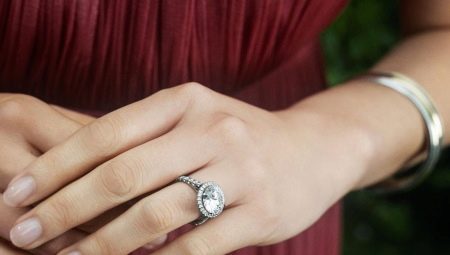
Modern jewelry stores offer their customers gold items not only in the traditional yellow shade, but also in noble white. The basis of such an alloy is gold. Not every buyer has an idea of what the 585 assay mark means, which stands on a white gold item, even though jewelry from it began to be produced in the last century. Such products are distinguished by high wear resistance and cost - it is believed that the white alloy is much stronger and more attractive than the yellow alloys.
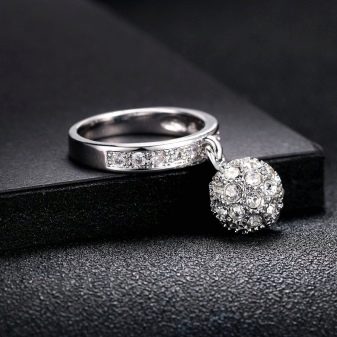
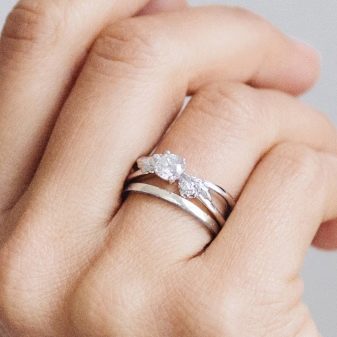
What it is?
In natural conditions, white gold does not exist.
It is obtained by combining the Au metal and additional components called ligatures. Metals such as silver, manganese, nickel, zinc and others are used as ligatures.
White gold of 585 assay value can contain any of them.
The characteristics and appearance, specific color shades of the precious gold alloy are influenced by the selected ligature. For example, when zinc is added, a plastic material is obtained that lends itself well to artistic forging and molding. By adding palladium, we get an alloy that has a high melting point and a pronounced white-silver hue. And if you use manganese as a ligature, you get an alloy of a light gray hue.
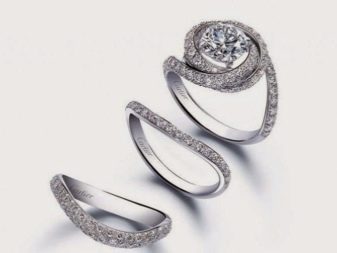
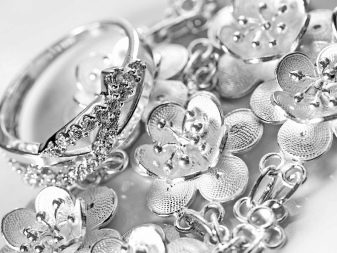
The most expensive ligature is considered to be platinum in combination with palladium. - it is they that give gold increased strength and protect the jewelry from oxidation when in contact with a humid environment. All other ligatures, in combination with gold, give an oxidative reaction, and because of this, the product darkens.
Therefore, white gold jewelry is plated with rhodium to give it a bright metallic luster and resistance to oxidation and scratches.
But such a coating is fragile, over time it wears off, requiring renewal.
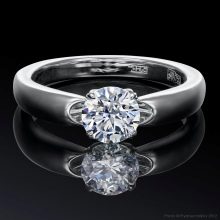
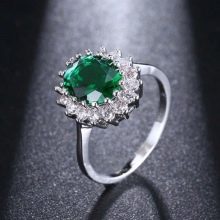
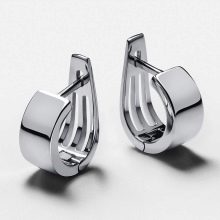
Advantages and disadvantages
The most important advantage for which jewelry is purchased is the appearance of white gold.
This noble alloy looks elegant, but, moreover, it is able, like no other, to highlight the beauty of diamonds and other precious or semi-precious stones.
However, the white gold alloy has a number of disadvantages:
- after a while after purchase, multiple scratches appear on the product, and the sparkling surface becomes dull if not regularly polished;
- products of 585 assay value, not plated with rhodium, oxidize and darken if the rhodium layer is not renewed in time;
- sometimes nickel is added to the ligature to gold, which is the strongest allergen and provokes an allergic skin reaction in the owner of the jewelry;
- the cost of white gold is much higher than the price of a conventional yellow gold alloy.
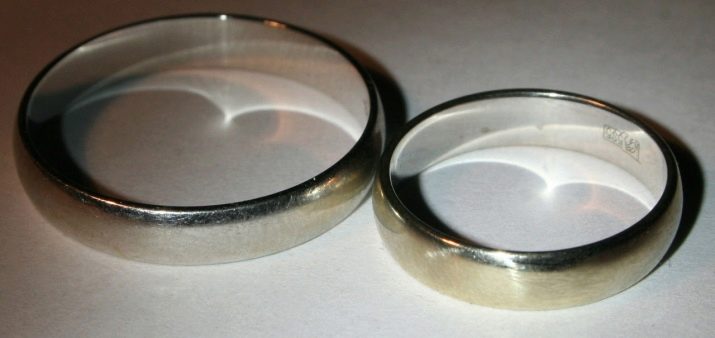
White gold alloy is suitable for the manufacture of all kinds of products, but when creating them, jewelers are guided by the ligature. For example, a material that combines Au and Ni is most often used in the manufacture of products that do not come into contact with human skin: brooches, cufflinks, pendants. The finished product is very durable, but has a yellowish, subtle tint.
If the material contains Au and Pd, or Au and Pt are used, then the purest white color is obtained, and the metal itself acquires increased strength.
Such an alloy is often used in the manufacture of complex jewelry, where reliable fixation of precious stones of various sizes is required.
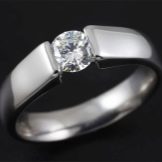
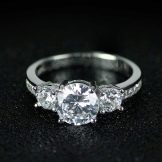
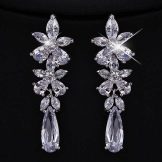
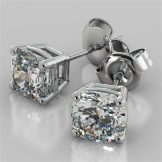
What does it consist of?
On the territory of Russia, alloy compositions in percent used for gold are regulated by the state standard: GOST 30649-99. Here is one example of an alloy of 14 karat white gold, which is made according to GOST standards:
- gold - 585 g;
- silver - 200 g;
- platinum - 215 g.
Instead of platinum, nickel or palladium can be taken in the same amount - these ingredients make it possible to obtain an alloy with a pronounced silver-steel hue.
The difference between the finished material and other alloys is that during its manufacture, copper was not added to the master alloy, since this metal does not give a white tint, but, on the contrary, would color the gold in reddish-yellow tones. To make the white alloy more affordable, silver or zinc can be added to the alloy.
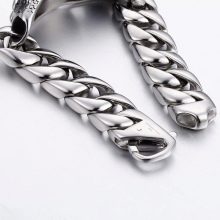
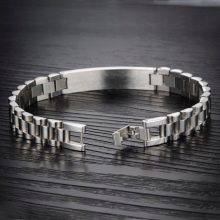

Do not be surprised that 2 identical 585 gold items will have different values... The price depends on which components were added to the alloy when the alloy was compiled.
For white gold, only those materials are used that do not give yellow tints, but these components cost an order of magnitude, and sometimes several orders of magnitude higher than the components for yellow gold.
This explains the high price for white alloys.
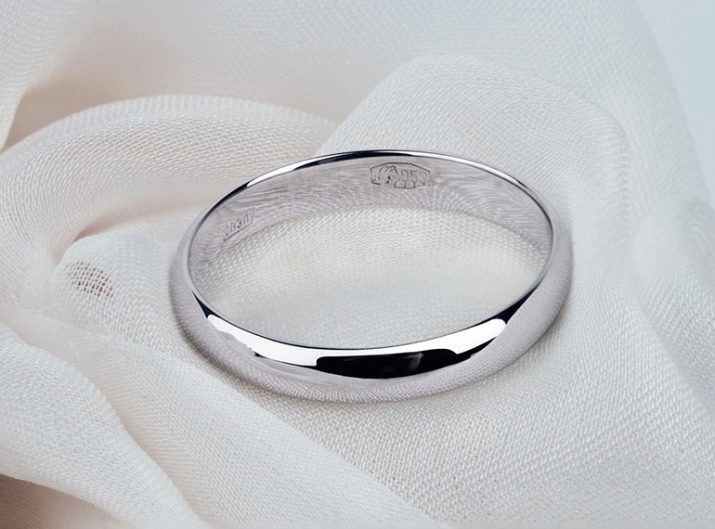
Signs of counterfeiting
Quite often people, inexperienced in the intricacies of jewelry, confuse white gold and silver, which at first glance look exactly the same. Therefore, you should not rejoice if you are offered to buy gold at the price of silver - a white alloy cannot be so cheap, and most likely, you have a fake in front of you. Knowing some of the nuances will help you distinguish a genuine gold piece from a fake.
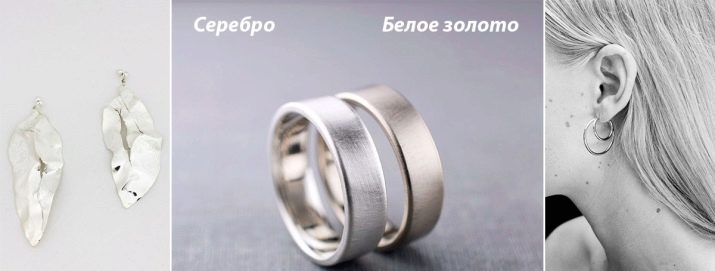
Visual differences
There are ways to help distinguish white gold from silver without using any auxiliary compounds or tools. But such an estimate can only be approximate.
- The sample indicated on the product. If there is a stamp with the number 925, then it is silver, since gold items do not have such a marking.
- If the product has a too matte surface, this will be a sign that an excessively large portion of silver is present in the ligature, which does not comply with GOST. Such a product, even if it contains gold, cannot cost a lot of money.
- If the product has 2 hallmarks at once: 925 and 585. One of these impressions was put later than the other, which indicates a fake, since there is no double marking for genuine products.
- You can understand whether a white alloy contains platinum by looking at the shade of the metal. When platinum is added, you will see shades with a yellowish glow. If they are not there, it means that there is palladium in the ligature, it gives a steel sheen, but it is much cheaper.
- Products containing nickel give a yellowish tint, but if you cover them with rhodium, which is almost always done by jewelers, the appearance of the products will be bluish-gray. The cost of such products is lower than that of products with platinum or palladium.
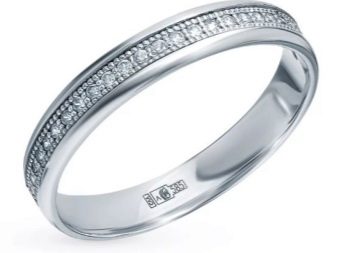
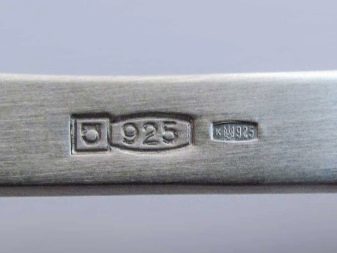
One way to distinguish a fake from a white gold alloy is its price. She, as an indicator, will show you the approximate composition of the ligature included in the alloy.
Examination
In the case when it comes to purchasing a large batch of precious items or other expensive purchase, It is best to check the authenticity of white gold on your own, without relying on visual inspection and the presence of a brand on the product.
- Using a strong magnifying glass, inspect the sample for irregularities or abrasions in the completed stamp impression. Sometimes a new sample is placed on top of a previously applied stamp, thereby masking silver items passed off as gold.
- The stigma with the number 750 indicates that the platinum content in the ligature is low, so the cost of a gold item cannot be high.
- Take a sheet of plain white paper and rub the piece of jewelry over it with light pressure. Silver products will leave a grayish touch on paper, while gold leaves no traces.
- If the products contain iron or nickel, then it will slightly adhere to an ordinary magnet, while the metals Au, Pd and Pt do not have magnetic properties.
- In a solution of vinegar, white gold items do not tarnish or stains. But if you have silver in front of you, then the product will lose its shine and beauty.
- A drop of iodine helps to identify a fake: there will be no stains on gold alloys, and a silver product will suffer during such a check. It will fade, stains will appear.

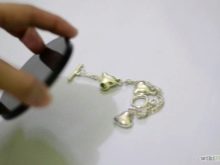
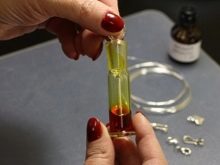
To protect yourself from buying a fake at a high price, try to buy jewelry in reputable jewelry stores that have existed for more than one year and value their reputation.
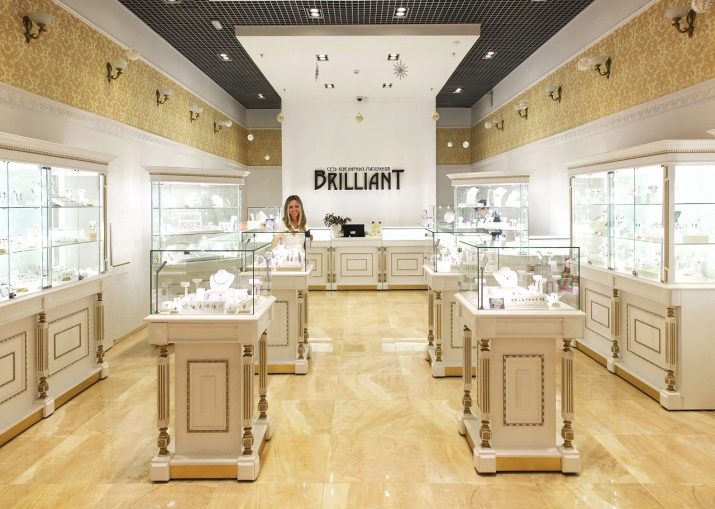
Care features
In order for a piece of jewelry to delight you with its original beauty and brilliance, you will need to regularly look after it and treat it with care. Jewelry made from white gold alloy is easy to care for. The main thing is to exclude the use of those cleaning and polishing substances that can damage the metal.
Do not do household chores or other work in jewelry.
Items that have a protective rhodium coating on top of a gold alloy will require especially careful handling from you. With proper care, this coating lasts for 5-7 years, but if cleaning and polishing is done too intensively and aggressive preparations are used, the rhodium layer will be lost much earlier. To update the appearance, jewelry is handed over to a workshop every 5-7 years to restore the coating.
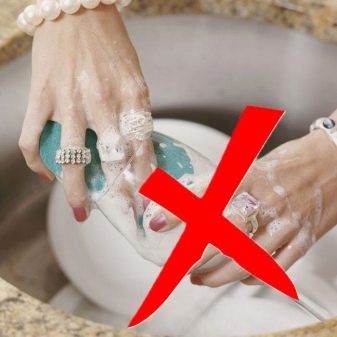
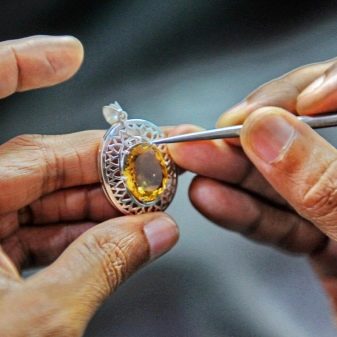
Products made of white precious alloy are treated with warm soapy water no more often than once every 30 days, after which they are rinsed in clean water and polished with a soft suede or felt cloth. Jewelry that has precious or semi-precious stones requires a more delicate and considerate approach. The fact is that such stones have certain requirements for care, and if they are not followed or an unsuitable substance for cleaning is used, the stone may lose its beauty: it will darken, change its color or become covered with the smallest network of cracks.
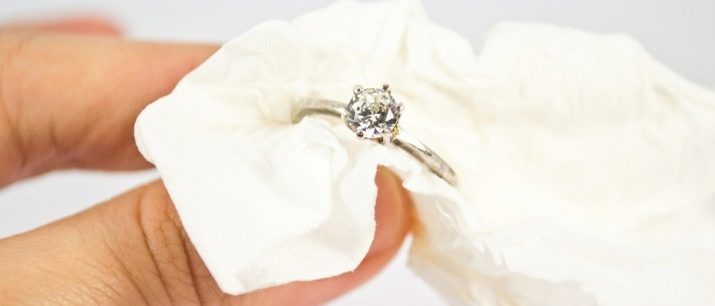
When cleaning white gold jewelry, be careful not to damage the setting that holds the stone.
Particularly valuable, expensive care items are handed over to the jeweler's workshop, where a professional will clean them, restore the rhodium plating and fix the frames where needed.
Price
Jewelry made of 585 white precious alloy on average can cost from 2,100 to 2,800 rubles per gram. The price directly depends on the composition of the ligature, the complexity of the product from an artistic point of view, as well as the jewelry brand under which it is made. Do not discount the markup that jewelry stores make to get their share of the profit. Stones inserted into the frame can also significantly increase the price of jewelry.
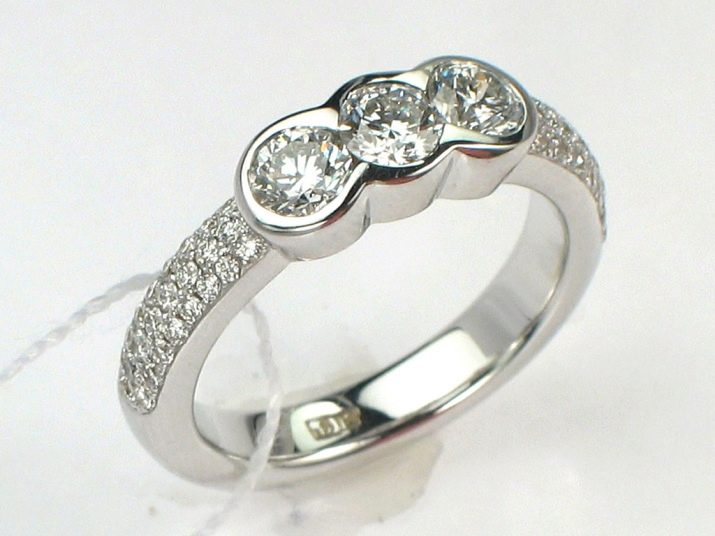
Jewelry precious alloy of white gold, which contains platinum and is marked with a hallmark of 750 tests, is even more expensive. The price per gram of the finished product in jewelry stores can be more than 3000 rubles.
What is white gold and how it differs from ordinary gold, see the video.








